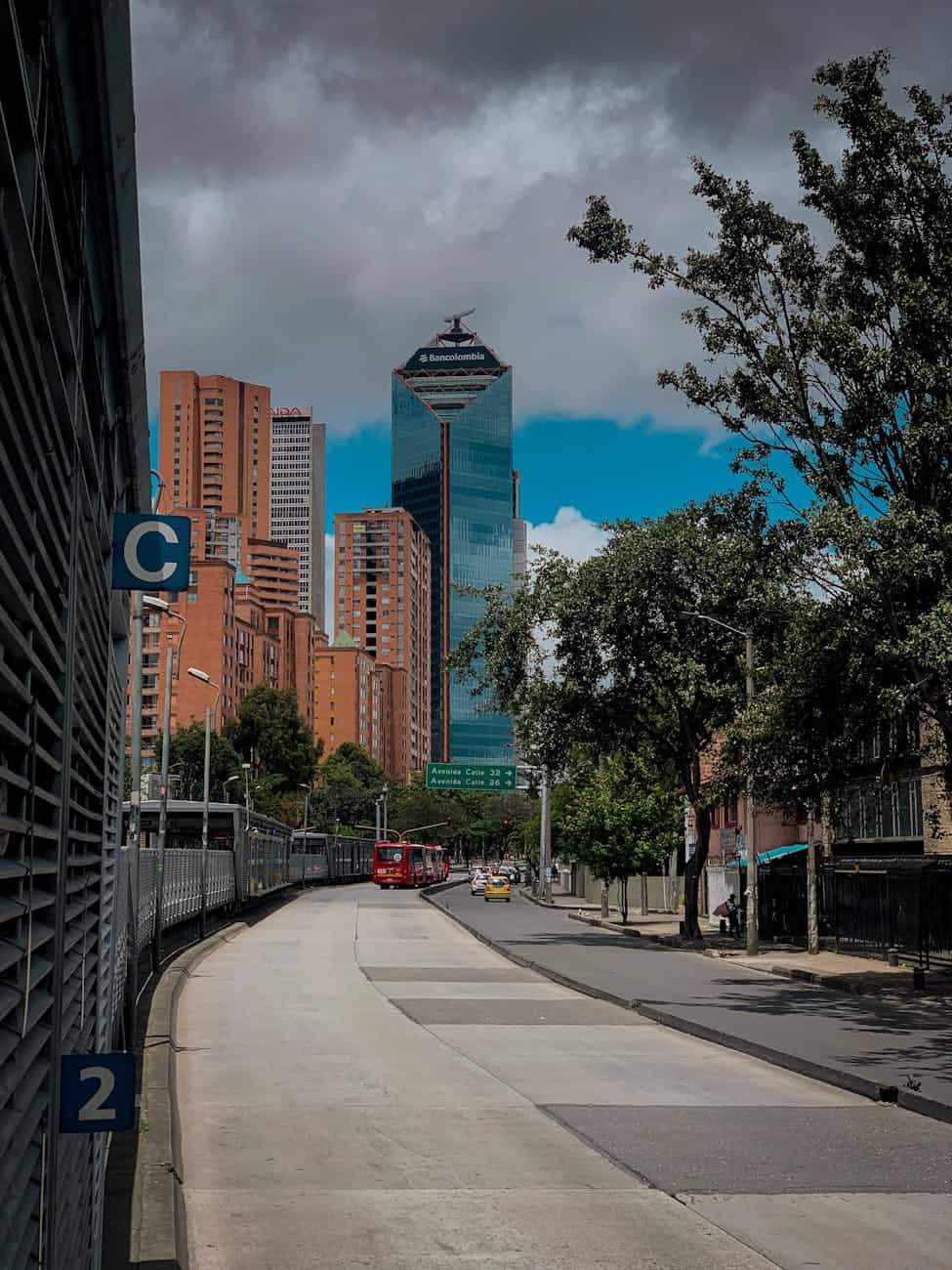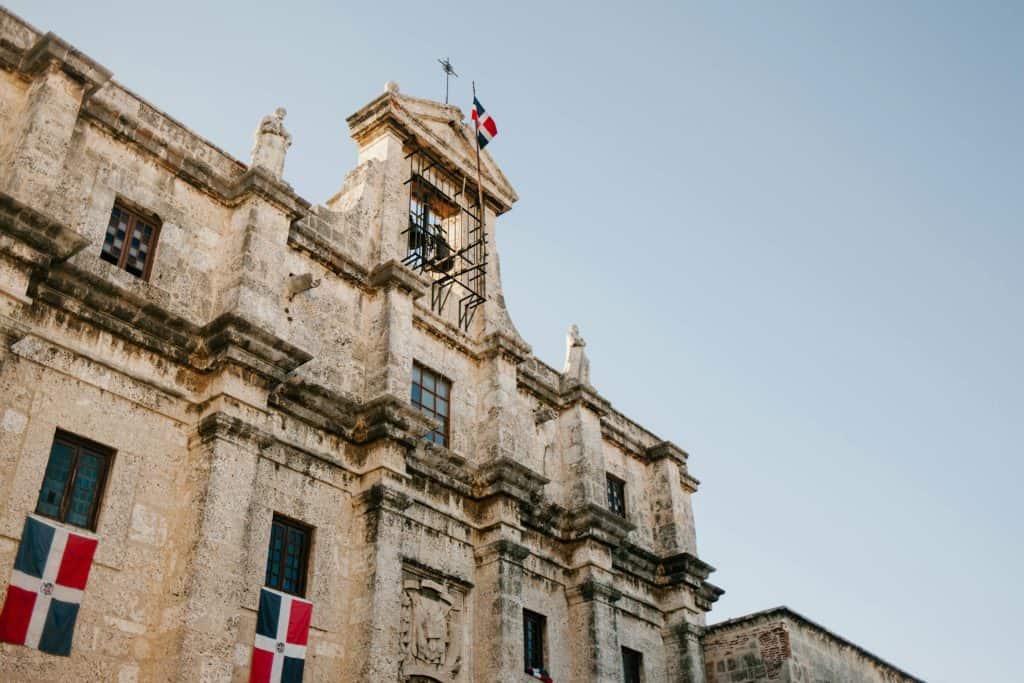Written by a decade‑long expat who has napped on Caribe Tours buses between Santiago and Santo Domingo, clung to motoconchos in Puerto Plata, and squeezed into Bogotá’s TransMilenio at rush hour—learning that “ceda el paso” is not a polite suggestion but a survival command.
Sunrise at the Santiago Bus Terminal—Where the Story Begins
It’s 5:45 a.m. The sun barely licks the Monumento when I shuffle into Caribe Tours with a café in one hand and an ear tuned for the crackling loudspeaker. A female voice announces:
Spanish (loudspeaker): «Pasajeros con destino Santo Domingo, favor abordar por la puerta tres. Salida seis en punto.»
English: Passengers bound for Santo Domingo, please board through gate three. Departure at six on the dot.
Half‑awake travelers jolt upright. For me, this announcement doubles as grammar lesson: the impersonal “favor + infinitive” softens orders into courteous imperatives. I jot it in my notebook next to the price of my mangu breakfast.
Grammar Spotlight—Impersonal vs. Passive Se
Transport announcements often avoid direct “usted.” Notice the bus sign «Se solicita mantener limpio el pasillo»—Please keep the aisle clean. Here se creates an impersonal construction, implying “people are requested.” Compare that to passive voice on a Colombian metro poster: «La puerta será abierta automáticamente»—The door will open automatically.
Quick Contrast
| Structure | Example | Literal English | Natural English |
|---|---|---|---|
| Impersonal se | Se prohíbe fumar. | Smoking is prohibited. | No smoking. |
| Passive voice | La puerta será abierta. | The door will be opened. | Door opens automatically. |
Understanding the difference helps decode tone—whether you’re being gently nudged or formally directed.
On the Bus—Announcements in Motion
Engine roars, AC rattles. Ten minutes out of Santiago, the driver’s assistant grabs the mic:
Spanish (assistant): «Próxima parada, La Vega. Pasajeros que continúan a la capital, favor permanecer sentados.»
English: Next stop, La Vega. Passengers continuing to the capital, please remain seated.
Conversation Snapshot
Me (Spanish): «¿A qué hora llegamos a Bonao?»
Assistant: «Si la vía está despejada, antes de las siete y media.»
Me: What time do we reach Bonao?
Assistant: If the road is clear, before 7:30.
He uses conditional “si la vía está despejada.” Seating charts become weather forecasts—each phrase steeped in future possibility.
Vocabulary Table—Dominican Bus & Guagua Phrases
| Spanish Phrase | English Meaning | Where You’ll See It |
| Abordar por la puerta | Board through the door | Caribe Tours, Metro Bus |
| Próxima parada | Next stop | Digital screens, driver mic |
| Mantenga su boleto a la mano | Keep your ticket handy | Ticket stub |
| No botar basura por la ventana | Do not throw trash out the window | Sticker on window |
| Cinturón de seguridad obligatorio | Seatbelt mandatory | Front windshield |
Afternoon in Bogotá—Entering the TransMilenio Jungle
Twelve hours later a damp Bogotá evening greets me. Crowd flows toward red articulated buses. Overhead speakers deliver rhythmic coordinates:
Spanish (PA): «Estación Universidad. ¡Puertas al lado derecho! Próxima estación: Las Aguas. Favor no bloquear la puerta.»
English: Universidad Station. Doors on the right side! Next station: Las Aguas. Please do not block the door.
The precision of “lado derecho” saves elbows; I pivot accordingly.
Dialogue with the Platform Guard
Me (Spanish): «¿Qué ruta me deja cerca del Parque de los Periodistas?»
Guardia: «Tome la B73 hasta Las Aguas y camine dos cuadras.»
Me: Which route drops me near the Journalists’ Park?
Guard: Take the B73 to Las Aguas and walk two blocks.
I repeat “B73”—be setenta y tres to nail Spanish letter‑number pairing, then squeeze onto the bus.
Medellín Metro—Elegance in Announcement Cadence
Next week, Medellín. I glide on sleek rails from San Antonio to Poblado. A tranquil female voice intones each station with identical melody—a linguistic lullaby:
Spanish: «Próxima estación: Industriales. Estación Industriales. Favor dejar descender antes de abordar.»
English: Next station: Industriales. Industriales Station. Please let passengers alight before boarding.
The repetition drills names deeper than GPS ever could.
Mini‑Story—Mistake That Became Memory
Back in Santo Domingo’s Metro, I once misheard «Este vagón no presta servicio» as «Este vagón no presiona servicio». Thinking it was urging me not to push, I stayed aboard a disabled car and missed my stop. Embarrassed yet enlightened, I added “prestar servicio” (to be in service) to my lexical treasury. Days later, at a café, the barista said their Wi‑Fi no estaba prestando servicio; comprehension clicked instantly. Error paid dividends.
Table—Colombian vs. Dominican Signage Nuances
| Category | Dominican Republic | Colombia | English |
| Yield | Ceda el paso | Dé paso | Yield |
| No leaning | No apoyarse en la puerta | Prohibido apoyarse en las puertas | Do not lean on door |
| Ticket keep | Conserve su ticket | Guarde su pasaje | Keep your ticket |
| Emergency brake | Romper cristal en caso de emergencia | Rompa el vidrio solo en emergencia | Break glass in emergency |
Understanding regional synonyms (romper / romper el vidrio) prevents confusion during urgent moments.
Grammar Detour—Future Passive in Announcements
Colombian trains use future passive: «Las puertas se cerrarán automáticamente»—The doors will close automatically. The auxiliary “se” plus future tense fosters polite detachment. Compare Dominican imperative sign: «Cierre la puerta»—Close the door. Familiarity with both styles shields you from missing cues.
Conversation at a Motoconcho Stand—Dominican Micro‑Transit
Me: «Hermano, ¿me lleva al teleférico de Los Sanos?»
Chofer: «Claro, súbase. Si hay tapón en la 27, nos vamos por la Duarte.»
Me: Brother, can you take me to the Los Sanos cable car?
Driver: Sure, hop on. If there’s traffic on 27th, we’ll go via Duarte.
Note the conditional contingency again: “Si hay tapón…” Mirrors bus assistant earlier; grammar principles echo across transport mod
Strategy: Shadow‑Read Signage Aloud While Waiting
Idle minutes on the platform become pronunciation drills. I softly read every poster: «Evite obstaculizar el flujo de pasajeros.» People think I’m rehearsing a speech; I’m rehearsing life.
Bringing It Home—Creating a Personal Transport Lexicon
Each commute I capture at least three new phrases—scrawled on receipts, typed into phone. At week’s end I merge into a spreadsheet categorized by function (safety, directions, etiquette) and region (DR, COL). Once a month I challenge myself to draft a fake announcement combining both dialects:
Spanish (mock script): «Buenas tardes, pasajeros con destino a Santo Domingo. Las puertas se cerrarán en un minuto; favor ceder el paso a quienes descienden y mantener su boleto a la mano para inspección.»
Reading it aloud cements syntax; imagining a real audience pumps adrenaline.
Final Boarding Call: Let the System Speak—You Listen, Learn, Respond
Public transport in the Dominican Republic and Colombia isn’t just a way to move; it’s an audio textbook and billboard dictionary. Loudspeakers drill structure, drivers improvise slang, and signs supply silent grammar lessons. Next time you clutch a handrail in a swaying TransMilenio bus or bounce on a Caribe Tours seat, treat every announcement as a quiz, every sign as a flashcard, every misheard phrase as a gateway to deeper understanding.
Que tu español viaje a la velocidad de tu autobús y que cada parada te deje una palabra nueva en el equipaje. ¡Próxima estación: fluidez!



